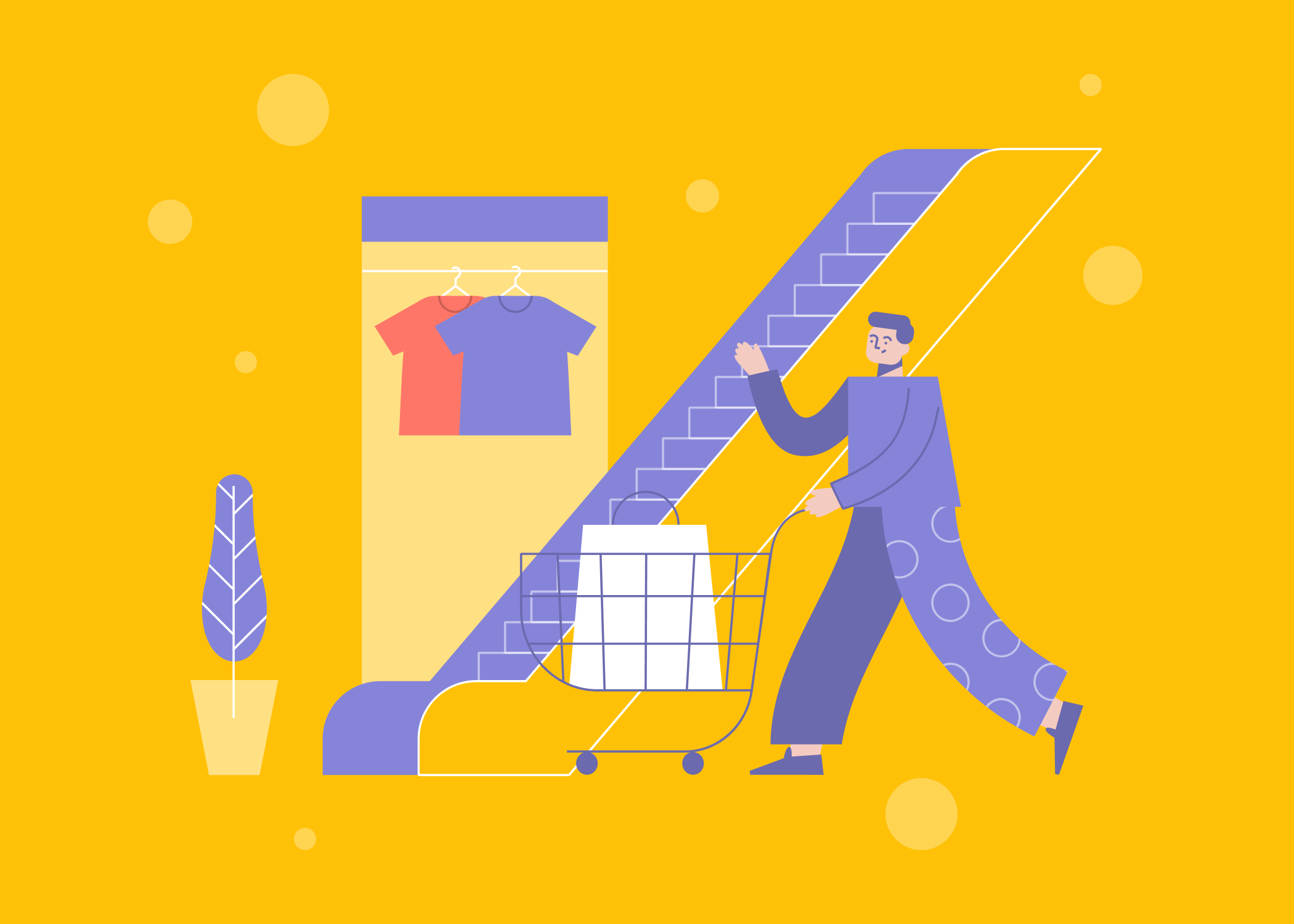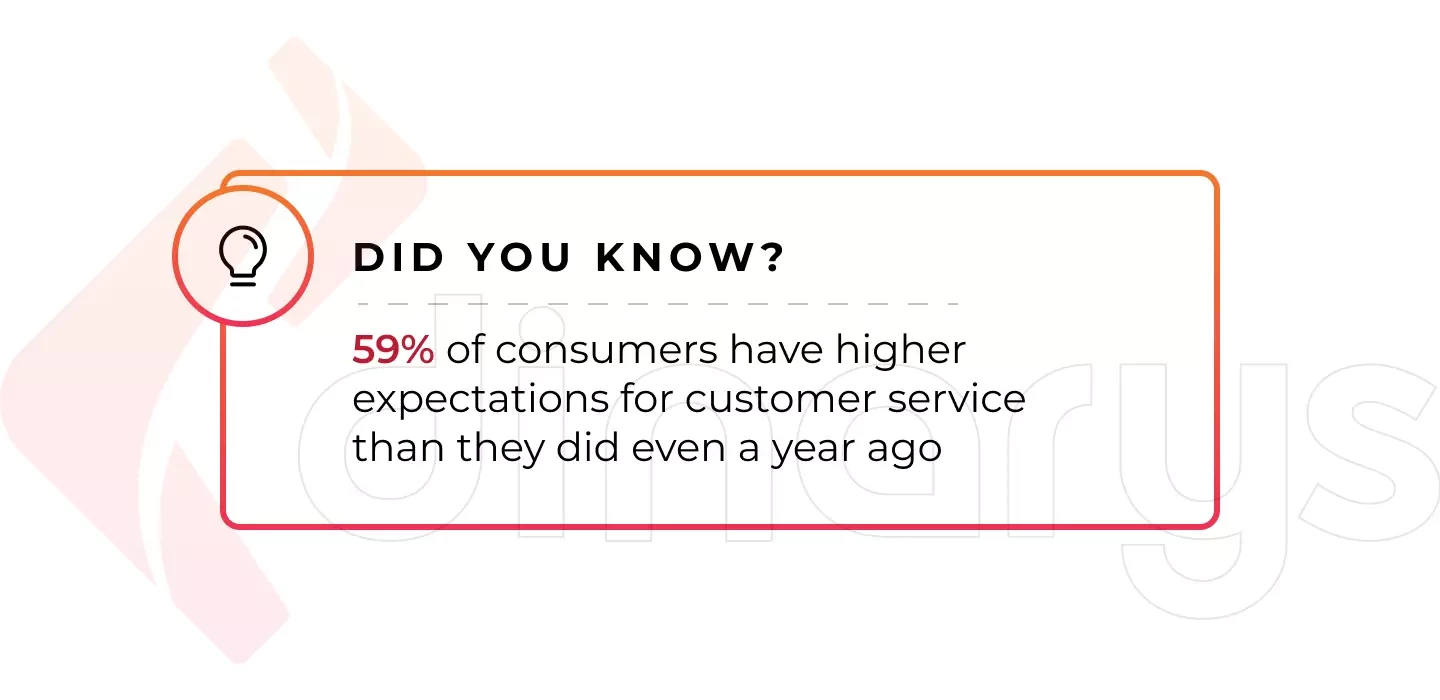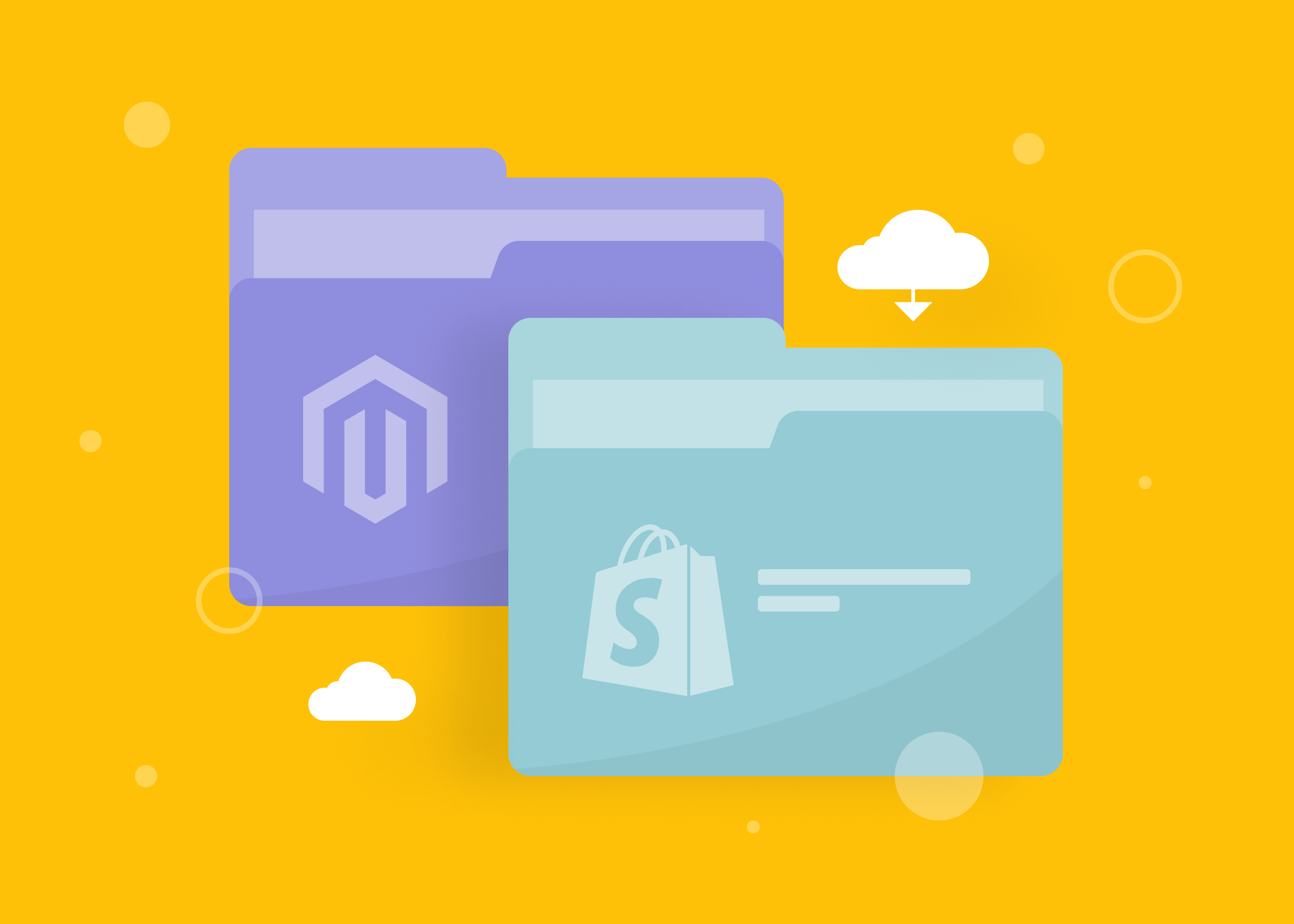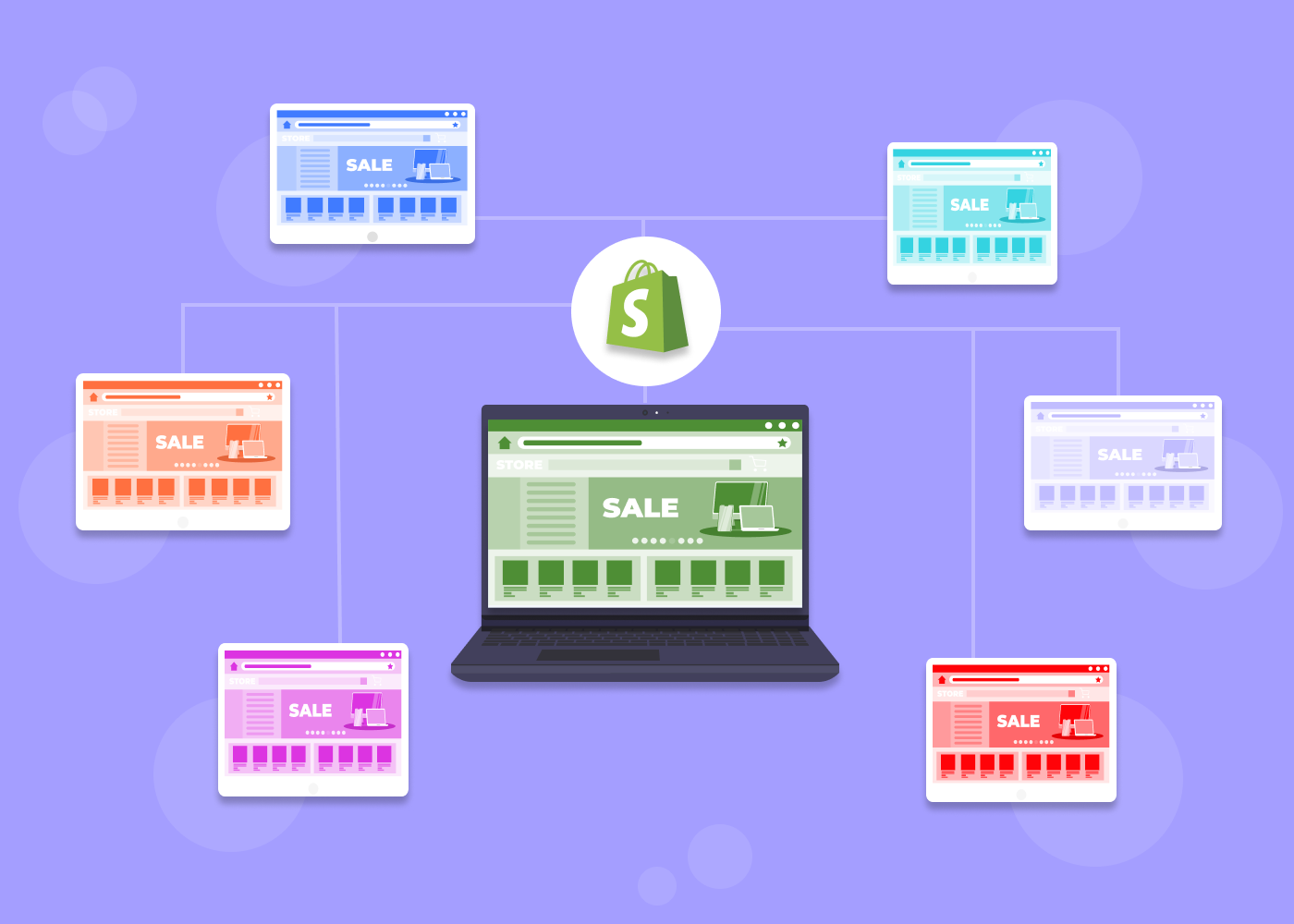Content
Using Connected Retail to Transform Your Customer Journey

Time to read: 20 minutes
The retail sector has changed significantly over the past five years, and it will not be the same after the next five years. According to recent statistics, 59% of consumers have higher expectations for customer service than they did even a year ago.

The rapid growth of technology and the availability of several sales channels have fundamentally altered consumer behavior. Customers now have different preferences for their online and offline shopping experiences.
Companies must improve their marketing tactics, keep pace with the rapidly expanding technology industry, and adopt innovative approaches to meet their clients’ needs.
Therefore, more e-commerce brands, especially those that operate multiple physical stores, are considering connected retail. What is connected retail? How can you benefit from it? How can you transform brick-and-mortar shoppers into digital consumers? This article explains the answers to these questions.
What Is Connected Retail?
Connected retail is a strategy that aims to effortlessly connect businesses with customers by using customized marketing, blending the physical and digital shopping experiences, improving the supply chain, providing various payment options, and giving employees the tools to work together more successfully.

Connected retail is not a new concept. For example, some online businesses already offer click-and-collect functionality, which is an element of connected retail.
Connected retail provides many intriguing tools for supply chain operations, such as real-time stock management, sales data, and trend analysis, as well as automatic forecasting of goods to purchase. For additional information, read “Supply Chain Visibility: Definition and Importance.”
As digital transformation consultants, we have observed that some brick-and-mortar vendors focus only partially on the digital experience. However, more consumers are choosing e-commerce, so making digital commerce an integral part of your business is inevitable. According to a 2022 GWI Commerce Report, the number of Americans completing their household or grocery shopping online has increased by 36%.
Therefore, we recommend that brick-and-mortar merchants who lack a digital presence incorporate connected retail techniques for the following reasons:
- Customers shop based on convenience, cost, personalized service, and the simplicity of payment and delivery. Customers are moving away from brand loyalty and focusing more on the advantages that businesses have to offer.
- Consumers easily adapt to current technology, and they are knowledgeable about available alternatives, touchpoints, and services. Consumers have unlimited access to both physical and digital choices and services.
- Numerous competitors are joining the e-commerce market as it expands with the shared goal of giving consumers the most and earliest options possible. To maintain the same quality of customer service and cultivate repeat business, the market players must be consistent across all channels.
The astounding pace with which new technologies are emerging and being adopted by consumers requires retailers to optimize their customer experience, supply chain operations, and other business activities.
Regardless of your market, connecting and engaging with your customers is never simple, but if you have not implemented connected retail, attracting and retaining customers will be even more difficult.
Advantages of connected retail
The shopping experience is better when customers engage more with retailers and their products. Let’s take a look at the advantages of leveraging connected retail to improve customer engagement.
Stronger connections between customers and brands
The ability to create deeper connections between brands and customers is one of connected retail’s biggest advantages. Stores must be more enticing because everything they advertise and sell is intended to persuade customers to make a purchase.
Another advantage is that a connected retail location makes it easier for customers to learn more about the brand. It coordinates with publicity stunts, such as gamification, customization, and micro-events, to create a shopping experience that focuses more on entertainment. Let’s call this “retailtainment.” It allows customers to engage with a brand in more ways than simply making a purchase.
Today’s retail experience in which the shelves and the layout are the same for every customer is worlds away from the connected retail experience. Future networked spaces will be much more dynamic, unique, and interesting. This is not surprising, since internet-enabled gadgets, sensors, triggers, and data focus on maximizing user benefits and boosting revenue. This will significantly impact our shopping practices and the future success of companies in the connected retail space.
Lets talk about itHave a project in mind?
Extended customer lifetime value
The connected retail space provides a better shopping experience. It is currently popular for stores to transform into nightclubs, concerts, bars, coffee shops, etc. Consumers are drawn to connected spaces when deciding whether to make a purchase.
Hence, brands that follow the connected retail approach foster a genuine connection with customers that is based on how much they may spend in the future within their connected space, rather than how much they have already spent.

Consistent brand experience
When your retail is connected, you can easily ensure that each platform you use is consistent with your brand image. This improves client satisfaction and experience and increases the likelihood that customers will buy from you again.
Customers want the same experience, regardless of the device or channel they use to access your business. For example, customers do not want to feel as if they are interacting with a new brand when they switch from your website to your company’s Instagram account. Customers will trust you more if your desktop and mobile websites and in-store experiences are easy to use and as similar as possible to each other.
Companies that consistently engage customers see a 9.5% year-over-year surge in annual income, compared to a 3.4% increase for companies that do not. Similarly, solid omnichannel businesses experience a 7.5% year-over-year reduction in cost per contact, compared to a 0.2% year-over-year reduction for weaker companies.
Deeper insights into customer preferences
You will find it easier to know your consumers in and out when you connect your retail. You market more effectively when you are aware of your customers’ preferences. For example, you can cater to your customers through customized emails and recommendations, product bundles, special discounts, or promotion alerts that may interest them.
Receiving personalized retail offers gives your customers a sense of empowerment because they feel appreciated, which improves customer satisfaction and retention. Therefore, knowing your customers’ preferences increases sales and basket revenues.
Green delivery
Consumers are more conscious of how their decisions affect the environment. Approximately 67% of shoppers are aware of environmental responsibility, while 19% are extremely committed to the practice.
By utilizing connected retail for quick deliveries, companies offer their clients not only an unrivaled level of convenience, but also the ability to choose the store closest to them by viewing the inventory. This provides your clients with the most convenient and sustainable access to goods.

Designing the Pivotal Retail Space
If you are wondering what it will take to change your company’s commerce strategy, consider taking a few basic steps.
Examine your current commerce strategy
Conduct an audit to evaluate your present commerce strategy and identify any deficiencies. This will give you a good idea of what must be improved, how to improve it, and which elements of your existing commerce plan may not support a connected retail strategy.
Analyze customer behavior across sales channels
You should clearly understand your customers’ behavior across channels to create a connected, consistent experience (both offline and online). Ask customers about their in-person and online purchasing habits, journeys, and preferences, as well as the frequency in which they switch between channels and their motivations for making purchases.
In addition, focus on micro-moments (i.e., actions or events). The first time a customer visits your store, app, or website, they are unlikely to make a purchase. A purchase typically occurs after several different micro-moments. Micro-moments are intent-rich moments, so they are gold mines for the purchasing journey.
By focusing on these instances, you can better understand the process your clients use to make a purchase and the time required for their buying process. You can design connected journeys that are consistent across all channels by mapping key moments in your engagement initiatives.
Choose the right digital transformation partner
The development and implementation of a connected commerce strategy is a significant endeavor. If you decide to outsource this task, think about collaborating with reputable e-commerce consultants who have an interest in your success.
Dinarys can assist you in making the most of the transition to and investment in a connected commerce strategy and offer you strategic guidance on the why, how, and what of creating and implementing a new commerce strategy.
Lets talk about itHave a project in mind?
Use data to discover new growth opportunities
Gather customer feedback and additional information to refine and enhance your new connected retail approach. This information reveals what is working and what requires optimization, as is the case with most transformation initiatives. In addition, establishing and monitoring success measures will indicate opportunities for further development.
For retailers and other businesses, sustained growth and success depend on building competitive advantages across merging channels and customer touchpoints and providing a refined and intentional user experience throughout the customer journey. This applies to both new and established businesses that are transitioning to connected retail.
Solutions to Make Your Connected Retail Thrive
Our fast-paced environment requires us to conduct business digitally. However, merely having it in place does not ensure success. You must actually use technology to achieve the business objectives of improving consumer experience and engagement and using an automated supply chain to fulfill e-commerce orders efficiently.
The following solutions can help you bring your connected retail plan into reality:
Headless architecture
A recent report from RSR titled “Retail Ecommerce in Context: The Next Iteration” found that only 36% of overperforming retailers reported satisfaction with their current tech stack’s ability to measure the business impact of commerce innovation, which is needed to implement the connected retail idea efficiently.
Therefore, headless architecture is key to solving connected commerce challenges and going omnichannel. Headless architecture refers to the division of an e-commerce platform’s backend and frontend (or consumer-facing) user interface. Any frontend experience that an enterprise can imagine is possible when the site design is decoupled.
With headless architecture, businesses can provide customers with distinctive and lasting purchasing experiences across a variety of platforms. By connecting to the same backend procedures, brands can interact with their customers where they make purchases. A lot of platforms nowadays suppoty such a shift, for example, BigCommerce headless solutions.
These backend procedures, such as enterprise resource planning, product information management, content management, customer database management, and checkout, remain under IT’s control and do not require laborious, time-consuming updates each time a frontend change is requested.
Read also: Composable commerce migration: Headless architecture and other benefits explained

Internet of Things
The major use of the Internet of Things (IoT) in retail is to bring together retailers, their customers, and their products into one effective chain that benefits everyone. By utilizing IoT, you can integrate “smart retail” into your regular business operations. We have provided a few examples of the best IoT applications.
IoT’s warehouse management solution provides real-time location and transportation information as well as packaging and shipment support that are helpful to businesses. Instant updates ensure that no asset is lost in the shuffle.
For additional information, read “KPIs to Measure Warehouse Performance and Efficiency.”
The IoT is frequently utilized in retail to prevent defective goods from reaching the shelves. The ability to monitor shipments while they are in transit is one benefit of using the IoT. Sensors ensure that the environment is suitable for the goods to arrive at your stores and that they are marketable.
The IoT in retail analytics supports the monitoring of staffing, sales, and customer behavior. It combines business intelligence with retail. For example, IoT systems can assist in identifying people’s age and gender to provide more pertinent information to consumers and to support businessowners in making decisions based on demographic data.
Click-and-collect option
Using the click-and-collect option, customers avoid rushing to a physical store to buy items and instead buy them from online stores without leaving their homes. Customers love this option because it eliminates the hassle of waiting for deliveries at specific times and decreases the chance of goods being stolen or damaged. Another benefit of the click-and-collect option is that there are no delivery costs.
Therefore, using the click-and-collect option, customers can quickly and discreetly pick up their desired goods at one of the seller’s physical stores using their computers or smartphones at a time that is convenient to them.
Social media strategy
To boost sales at their physical storefronts, retailers now use social media. For example, to receive free products and bonuses, some retail businesses, such as Victoria’s Secret, encourage their consumers to shoot selfies in their stores and share them on social media. Using this strategy, retailers further connect the physical presence of their stores with their social media presence as a way to influence customers and increase sales.
Assisted sales technology
Using assisted sales, clients may now shop offline for the items they sought online, and vice versa. For example, customers may have looked for items in an online store that were unavailable. Using assisted sales technology, businesses can alert these customers (via email, SMS, etc.) that these items are now available when they visit one of the retailer’s physical stores.
Final Thoughts
Developing valuable relationships with your customers ultimately requires a connected retail approach. It may be wise to invest in this strategy if engaging, attracting, and satisfying customers is still a challenge for you. Providing this streamlined experience for your customers will inevitably boost your leads, sales, and revenue.
Dinarys assists retail enterprises with digital transformation, business optimization, and future-proofing. We have expertise in the manufacturing, distribution, retail, and food sectors, and we have a vast portfolio backed by in-depth expertise, technological know-how, and insightful client knowledge.
Contact us today, and we will help your business become more connected in planning and operations.
Let professionals meet your challenge
Our certified specialists will find the most optimal solution for your business.



